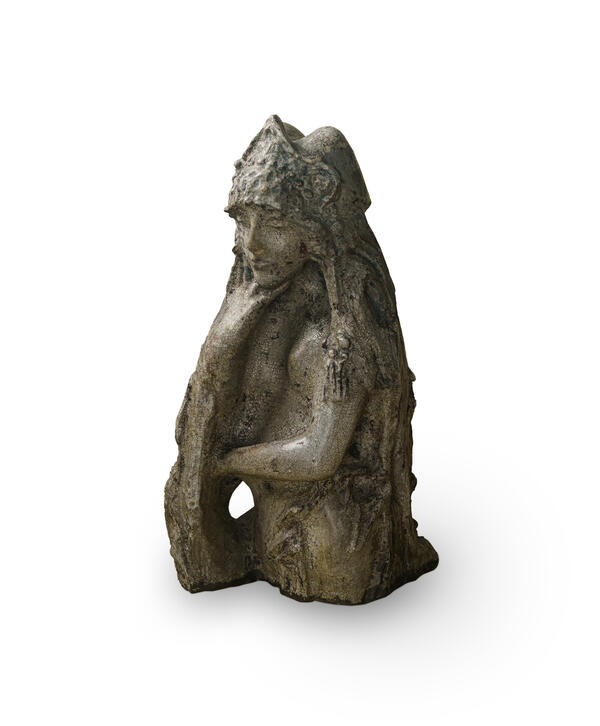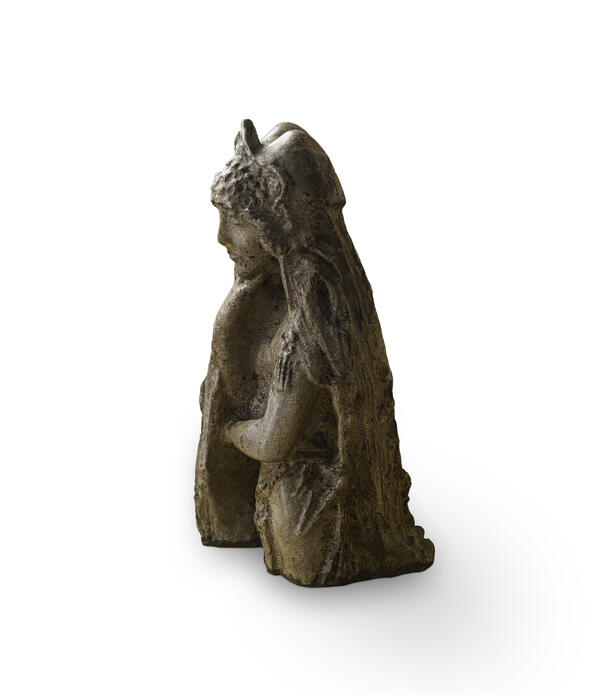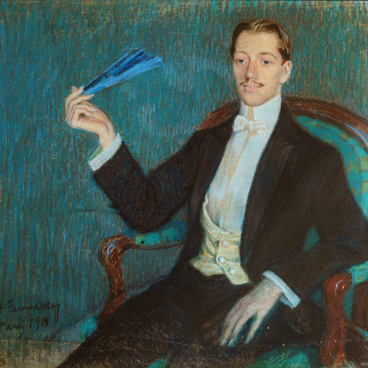The Literary Museum of the Pushkin House features a small majolica sculpture titled “Volkhova, ” created in a workshop at Abramtsevo by the ceramist Peter Vaulin, based on a design by Mikhail Vrubel. The sculpture depicts Volkhova, the daughter of the Sea Tsar and character from Nikolai Rimsky-Korsakov’s opera “Sadko”. The premiere took place in 1897, presented by Savva Mamontov’s Russian Private Opera at the Solodovnikov Theater (today the Moscow Operetta Theater).
Volkhova was portrayed by Nadezhda Ivanovna Zabela-Vrubel, Mikhail Vrubel’s wife and muse. They met when Vrubel was designing sets for productions at Mamontov’s private opera. Vrubel contributed to the designs for Rimsky-Korsakov’s operas “The Tsar’s Bride” and “The Tale of Tsar Saltan”. As an artist, Mikhail Alexandrovich Vrubel is known for his versatility. He was not only a painter, graphic artist and sculptor, but also a skilled muralist and set designer. In the 1890s, at the estate of Savva Mamontov in Abramtsevo, Vrubel developed a passion for ceramics and took charge of a factory that produced tiles and terracotta products. During that time, he created a series of majolica sculptures, inspired by fairy tales, including the work on display — “Volkhova”.
Vrubel’s work inspired the renowned ceramicist Peter Vaulin, who significantly contributed to the revival of Russian majolica. The “Volkhova” piece from the collection of the Literary Museum once belonged to the poet Alexander Blok and his wife, Lyubov Dmitrievna. Blok’s exposure to Vrubel’s art began with a collection of poems by Mikhail Lermontov that featured the artist’s illustrations for the poem “Demon”. In February 1903, Vrubel presented his paintings “The Swan Princess” and “The Demon Seated” at the exhibition organized by the Mir Iskusstvo (World of Art) artists. Blok came to the exhibition and was tremendously impressed by Vrubel’s works.
Inspired by Vrubel’s paintings, Blok wrote the poem
“The Distances are Blind, the Days are Peaceful”. After the funeral of Mikhail
Vrubel, Blok and Lyubov Dmitrievna purchased “Volkhova”. Blok delivered a
eulogy,





